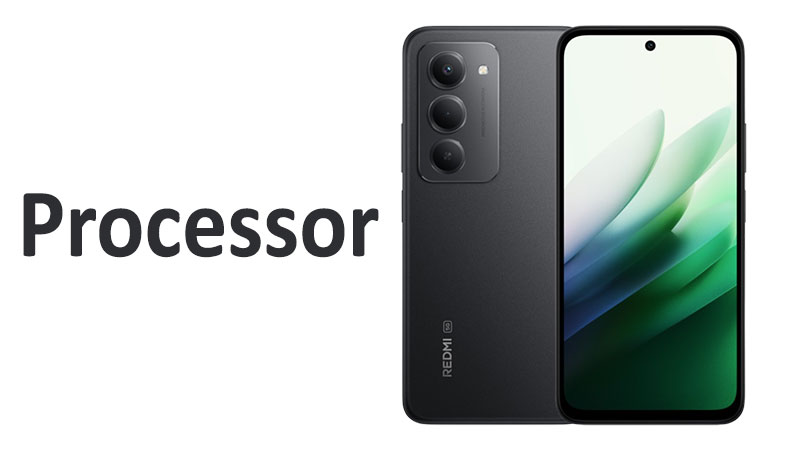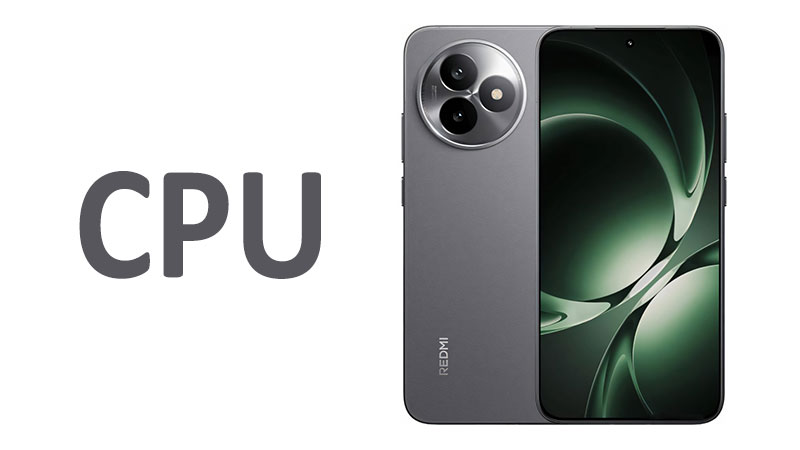In the competitive world of budget and mid-range smartphones, the processor is the heart of the device. It dictates everything from app responsiveness to gaming performance and power efficiency. The Xiaomi Redmi 15 continues this tradition by featuring a capable chipset designed to deliver a balanced user experience without breaking the bank. This article provides a comprehensive look at the Xiaomi Redmi 15 processor, exploring its capabilities, comparing it with key competitors, and offering a detailed analysis for potential buyers.
Introduction to the Xiaomi Redmi 15 Processor
The Xiaomi Redmi 15 5G is equipped with the Qualcomm Snapdragon 6s Gen 3 processor. This particular chipset is a crucial element that distinguishes the phone within its price bracket. The inclusion of the Snapdragon 6s Gen 3 suggests a focus on providing reliable 5G connectivity and a smooth daily experience. For a budget-friendly device, the choice of a Snapdragon 6-series processor is a significant highlight, positioning the Redmi 15 as a compelling option for users who want modern features without a flagship price tag.
A Detailed Review of the Snapdragon 6s Gen 3
The Snapdragon 6s Gen 3 is built on a 6nm manufacturing process. This is an important detail because a smaller process size generally leads to better power efficiency and less heat generation. The processor features an octa-core CPU, consisting of two high-performance Cortex-A78 cores clocked at 2.3 GHz and six power-efficient Cortex-A55 cores clocked at 2.0 GHz.This configuration allows the phone to handle demanding tasks and everyday activities with a good balance of performance and battery life. The Adreno 619 GPU handles the graphical duties, providing enough power for casual gaming and smooth UI navigation.
Key Features and Components
- CPU Architecture: Octa-core with a 2+6 core configuration for efficiency and performance.
- GPU: Adreno 619 for a smooth visual experience.
- Fabrication Process: 6nm, contributing to improved power management.
- Connectivity: Integrated 5G modem, Wi-Fi 5, and Bluetooth 5.1.
- AI Capabilities: The processor includes a Hexagon DSP, which enhances AI-driven tasks such as camera processing and voice recognition.
Specialized Comparisons: Redmi 15 vs. Redmi 14
Comparing the Redmi 15 processor to its predecessor, the Redmi Note 14’s MediaTek Helio G99-Ultra, reveals a notable shift in strategy. The Redmi Note 14’s processor was also built on a 6nm process, but the Snapdragon 6s Gen 3 brings several key enhancements. The new Snapdragon chipset offers a more refined architecture and is often associated with better optimization for Qualcomm’s software and a wider range of app compatibility. While the Helio G99-Ultra was a capable performer, the Snapdragon 6s Gen 3 in the Redmi 15 provides a slight edge in raw performance and, more importantly, offers built-in 5G connectivity. The Redmi Note 14’s processor was a 4G-only chip.
When compared to direct competitors in the same price segment, such as the Poco M7 Plus with its Snapdragon 7s Gen 3, the Redmi 15’s processor holds its own. While the Snapdragon 7s Gen 3 might offer a higher clock speed and slightly better benchmark scores, the Snapdragon 6s Gen 3 in the Redmi 15 is a very capable and efficient alternative, often at a more attractive price point.
Pros and Cons of the Redmi 15 Processor
The processor in the Xiaomi Redmi 15 brings several advantages and a few trade-offs that a potential buyer should be aware of.
Pros
- Efficient Performance: The 6nm process and octa-core architecture provide a good balance of speed and power efficiency, making it suitable for all-day use.
- Future-Proof Connectivity: The integrated 5G modem ensures that the phone is ready for the next generation of mobile networks, a feature that’s becoming standard even in budget phones.
- Reliable for Everyday Tasks: From social media browsing to video streaming and multitasking, the Snapdragon 6s Gen 3 handles common tasks with ease.
- Good for Casual Gaming: While not a flagship gaming processor, the Adreno 619 GPU is more than capable of running popular mobile games at moderate settings.
Cons
- Not for Heavy Gaming: The processor may struggle with graphically intensive games at high settings, leading to frame drops and noticeable heat.
- Not a Performance King: Compared to more expensive devices with Snapdragon 7 or 8 series chips, the Redmi 15’s processor offers a more modest level of performance. This is a deliberate choice by Xiaomi to keep the price down.
- Benchmark Scores: While respectable, the benchmark scores may be lower than those of more expensive devices with higher-tier processors.
Conclusion
The Xiaomi Redmi 15 processor, the Qualcomm Snapdragon 6s Gen 3, is a highly competent and efficient chipset for its class. It provides a strong foundation for the phone, delivering smooth performance for daily tasks, enjoyable gaming, and crucial 5G connectivity. While it may not compete with flagship-tier processors in raw power, its strengths lie in its exceptional balance of performance and power efficiency.
For the vast majority of users, this processor will exceed expectations. It’s an ideal choice for anyone seeking a reliable, budget-friendly smartphone that doesn’t compromise on the essential features of a modern device. By understanding the capabilities and limitations of the processor, buyers can confidently make a choice that aligns with their needs and budget.
FAQ
The Xiaomi Redmi 15 5G is powered by the Qualcomm Snapdragon 6s Gen 3.
The Snapdragon 6s Gen 3 is suitable for casual to moderate gaming, but it may struggle with very demanding games at the highest graphics settings.
The Snapdragon 6s Gen 3 is built on a 6nm fabrication process, which contributes to its power efficiency.



